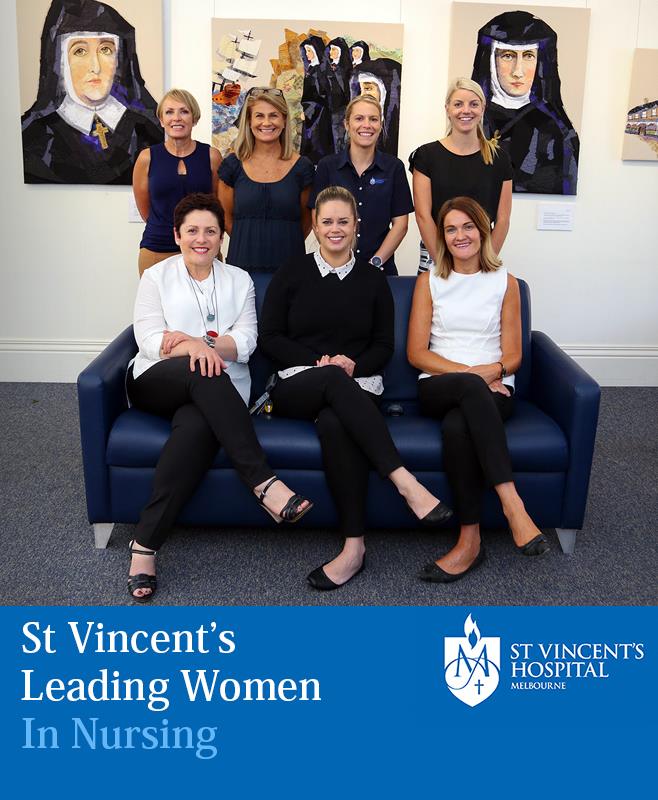2016 Exhibition at St Vincent's Gallery, Fitzroy
The theme ‘The Story of St Vincet’s’ which was inspired as an artist in Studio 3 at Caritas Christi Hospice Kew fro March 2014 to 2015 and in which I am grateful to St Vincent’s Artist in Residency programme.
The studio looked over the beautiful garden and distance views of the Yarra Rangers National Park, I was very fortunate, to see life pass so gracefully from my window as patients, family and friends visited their loved one in the garden. The surroundings inspired the investigation of the cultural of caring and kindness. The Hospice was built in 1938, and the history echoed the past, I started researching the Sisters of Charity and travelled back in time to their foundress Mary Aikenhead in Ireland 1789.On my journey I obtained historical information not only on Mary Aikenhead but other outstanding women such as Mother Mary Berchmans Daly and Ida O’Dwyer who had been an integral part of St Vincent’s hospital inception.
I hope this exhibition will inform the viewer of the wonderful work of the Sisters of Charity, the story of St Vincent’s and the dedication and care of the St Vincent’s nurses.”
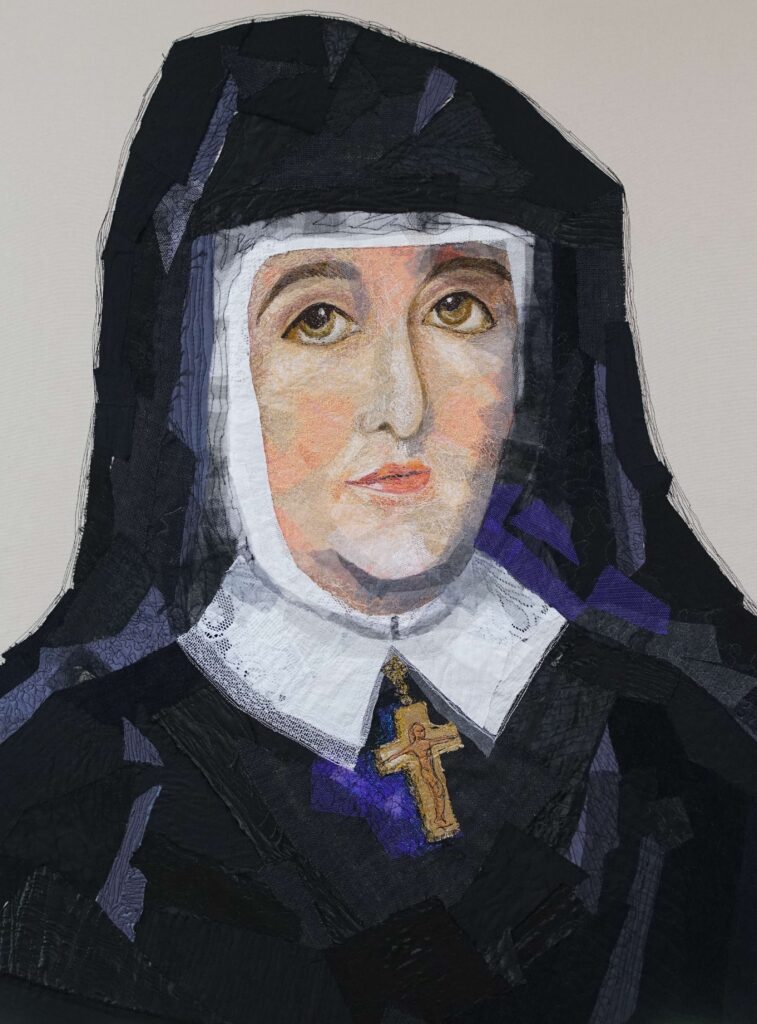
Mother Mary Frances Aikenhead was born in Cork, Ireland on January 19th, 1787. She died in Dublin on July 22nd, 1858.
Mary Aikenhead founded the Religious Sisters of Charity in 1815 in Dublin. In 1834 she established St Vincent’s Hospital in Dublin, the first Catholic hospital in Ireland.
The founders chose for their motto; “Caritas Christi Urget Nos”

Mother Mary Berchmans Daly was born in Ireland in 1860. Migrating to Australia with her family as a young child she was educated at home. In 1877 she was accepted as a teacher and followed this career until she entered the Sisters of Charity in 1881. Sent to Melbourne as part of the first Victorian foundation she continued teaching, however, visits to the homes of the poor convinced her of the need for a hospital similar to the one the sisters had founded in Sydney.
St Vincent’s Hospital, Melbourne, was officially opened on 6 November 1893.
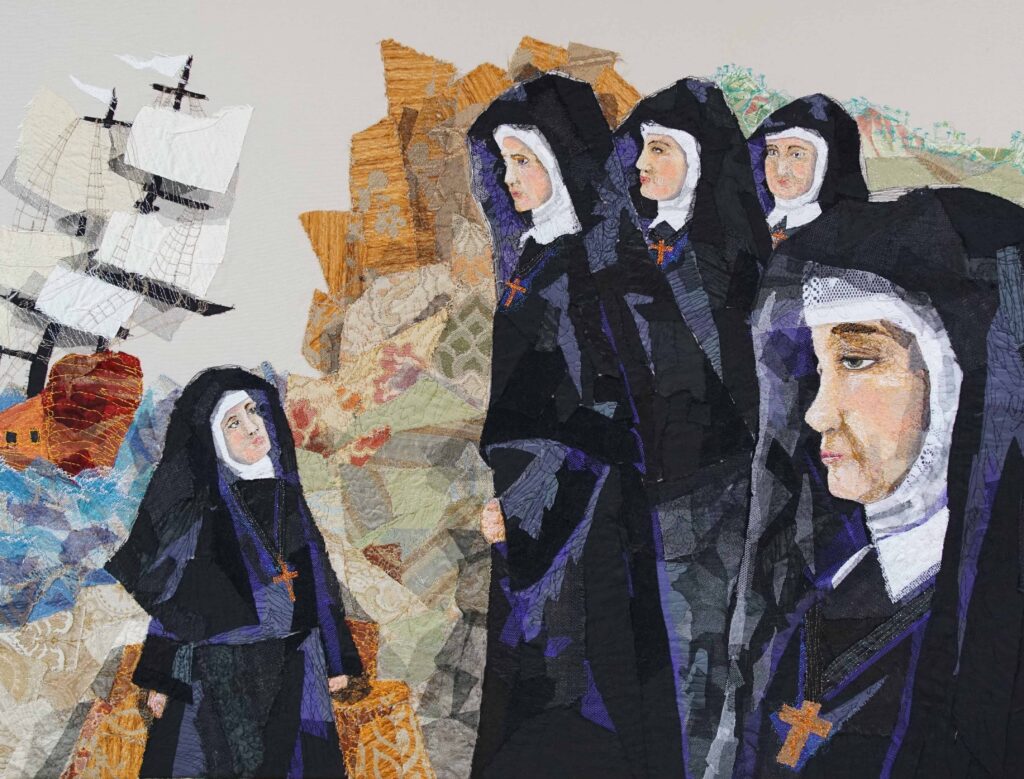
On the last day of 1838, 31st December, the “Francis Spaight” entered Sydney Harbour through the Heads. On deck were five Sisters of Charity for whom the journey took four and a half months, the sisters who volunteered were the first Religious Sisters to step foot on the Australian continent.
They were; Mother Mary John Cahill, Sister Mother John Baptist De Lacy, Sister Mother Xavier Williams, Sister Mother Lawrence Cater and Sister Mother Francis de Sales O’Brien.

St Vincent’s Hospital, Melbourne, was officially opened on 6 November 1893 with abut thirty beds, though actually it had been taking outpatients from about July 1893 as a small medical mission for the poor of Fitzroy.
The new St Vincent’s building (with Mary Berchmans at the entrance) was opened on 5 November 1905.The new hospital had high-ceilings, wards of twenty beds, each floor had balconies, ensuring isolation for each ward. There were many lead light windows with etchings of daffodils through the hospital.
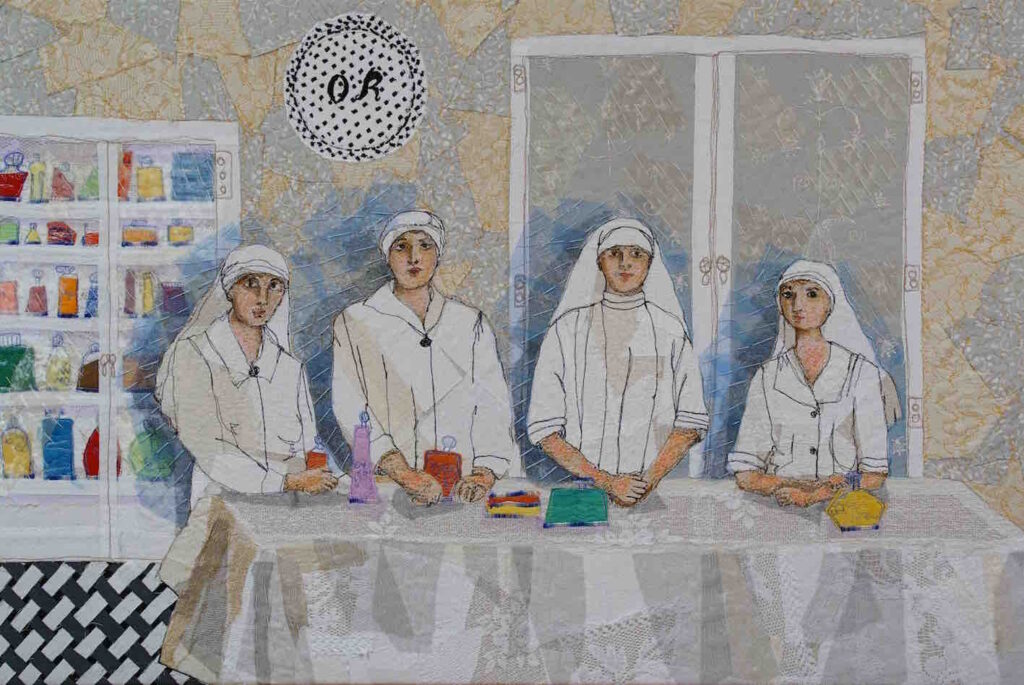
One of the main Operating Rooms with theatre nurses at St Vincent’s Hospital in 1925.The O R symbol was part of a (now gone) beautiful circular tiled mosaic on the floor.A western annexe contained three operating theatres, sterilising apparatus, anaesthetic, receiving, doctors’ and bathrooms.The walls were germ-proofed.

St Vincent’s Health services are provided to people who are homeless or at risk of homelessness.

St Vincent’s Hospital was registered as a training school for nurses with the newly formed Victorian Trained Nurses’ Association in 1901.
Ida O’Dwyer graduated in 1902, she was one of the first Sisters to join up with the Australian Army Nursing Service, in 1904. During WW1 she served in Egypt and was in charge of the Nurses’ Hospital in London and was head sister of the No. 3 Australian Casualty Clearing Station in France.
After the war she continued to care for sick and wounded soldiers as Matron of Caulfield Military Hospital from 1920 to her retirement in 1938.
Ida was elected Principal Matron in Victoria until 1931, also
first President for St.Vincent’s Past Nurses Association.

More than 70% of St Vincent’s former nurses had seen service at home or abroad in WW1, more than 60 St Vincent’s graduates nursed in the war.
Lemnos became the location of the major Allied medical hospitals supporting the Gallipoli campaign.
Many STV nurses nursed the ill and wounded.

More than 60 St Vincent’s graduates nursed in the WW1, they cared for casualties in hospitals, in casualty clearing stations closer to the front line and hospital and transport ships anchored off- shore.
St Vincent’s nurses were sent to Egypt, England, France, Italy, Greece, India, Persia.
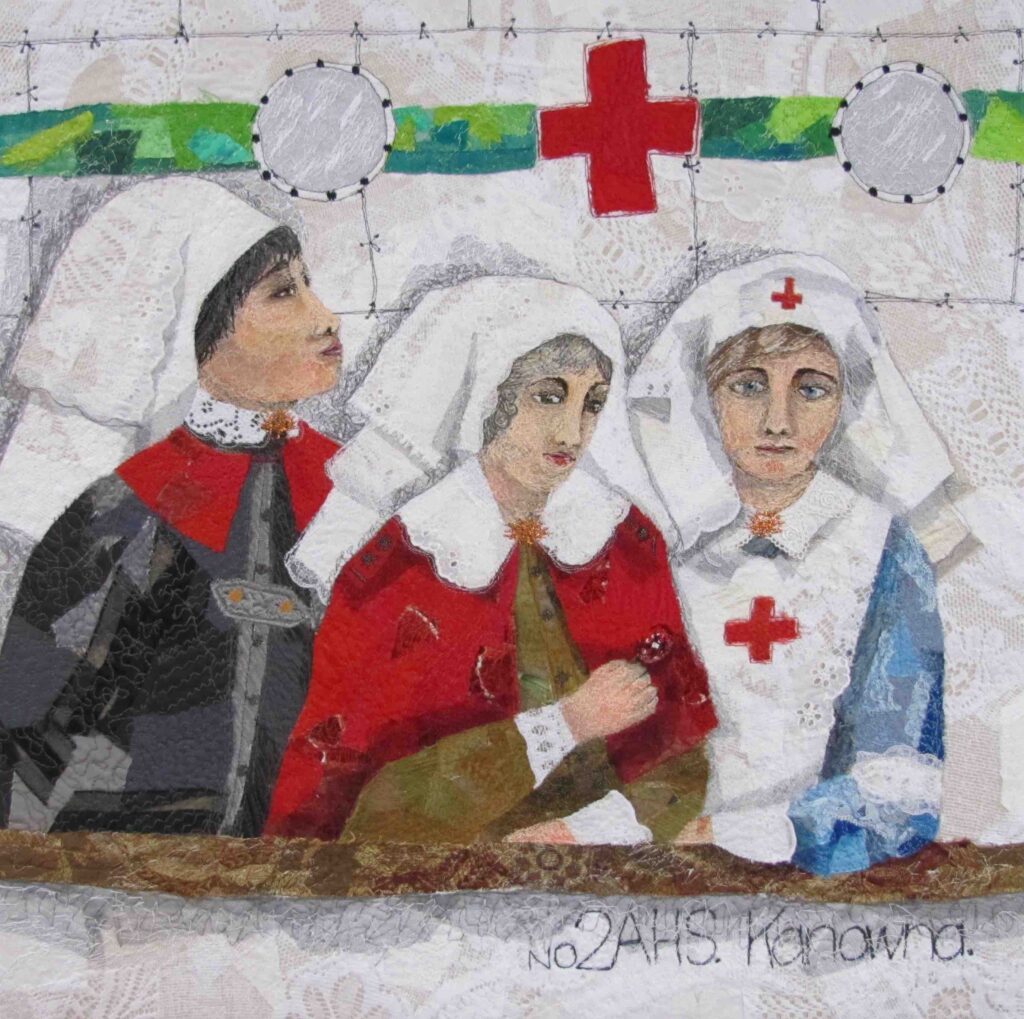
Built in 1902,TSS Kanowna was a passenger liner, one of the first larger steamers to appear in Australia.The vessel was requisitioned for military services in 1914 and converted to a hospital ship in 1915.
12 nurses from Victoria served on the number 2 Australian Hospital Ship (2AHS ) Kanowna. For the next three years she transported sick & wounded from England to Australia.

In 1959 Sister Francesca Healy rcs established and set up the Home Care Extension Service which operated from St Vincent Hospital Fitzroy Melbourne.
Sister Francesca Healy began with a station wagon and the help of trainee nurses to provide nursing care in patients’ homes after discharge.
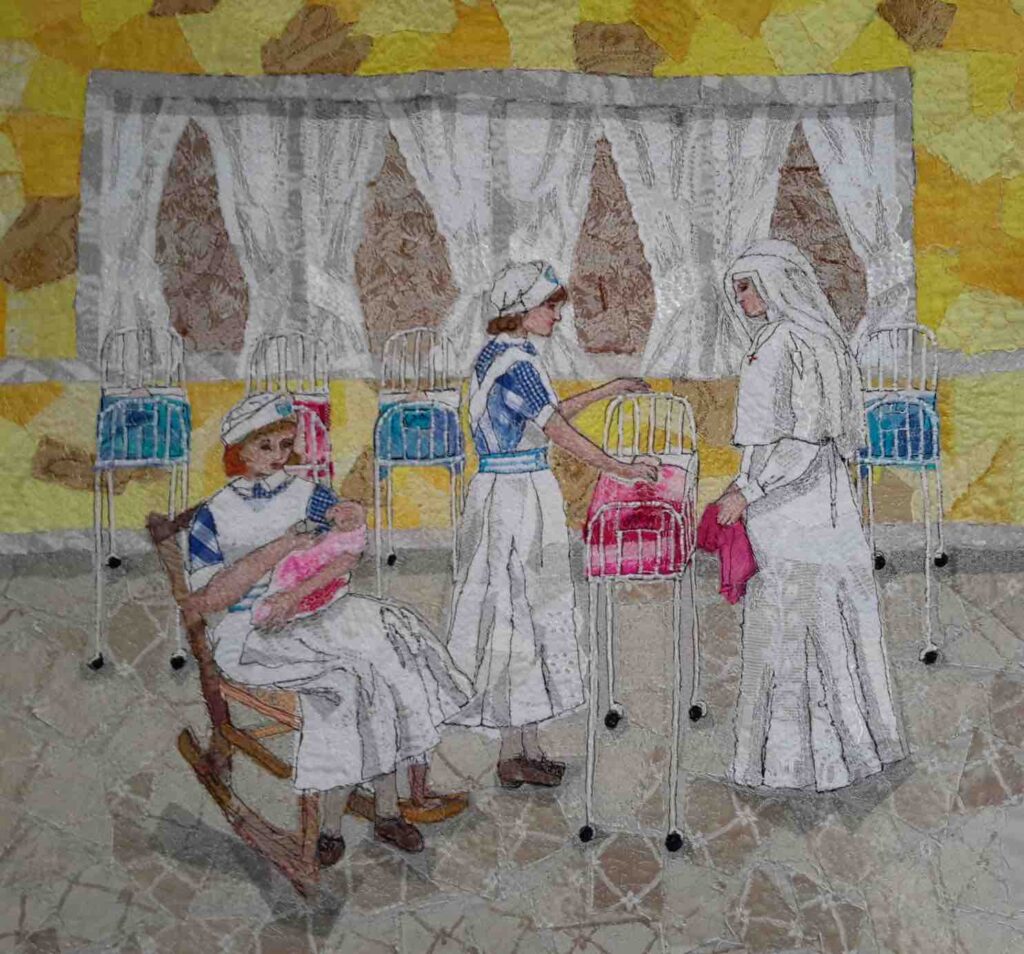
In 1937 a private hospital opposite St Vincent’s put their property on the market, this was the ideal spot for a new midwifery hospital. Mother Alphonsus secured a loan and a generous benefactor John Wren arranged the mortgage.
The first baby born arrived on 11 October 1937. In 1938 Sister Dorothea Devine took charge of the new venue, she was dedicated and hard working with a reputation of being ‘the best midwifery in Melbourne’ doctors all over Melbourne tried to get their patients in there.
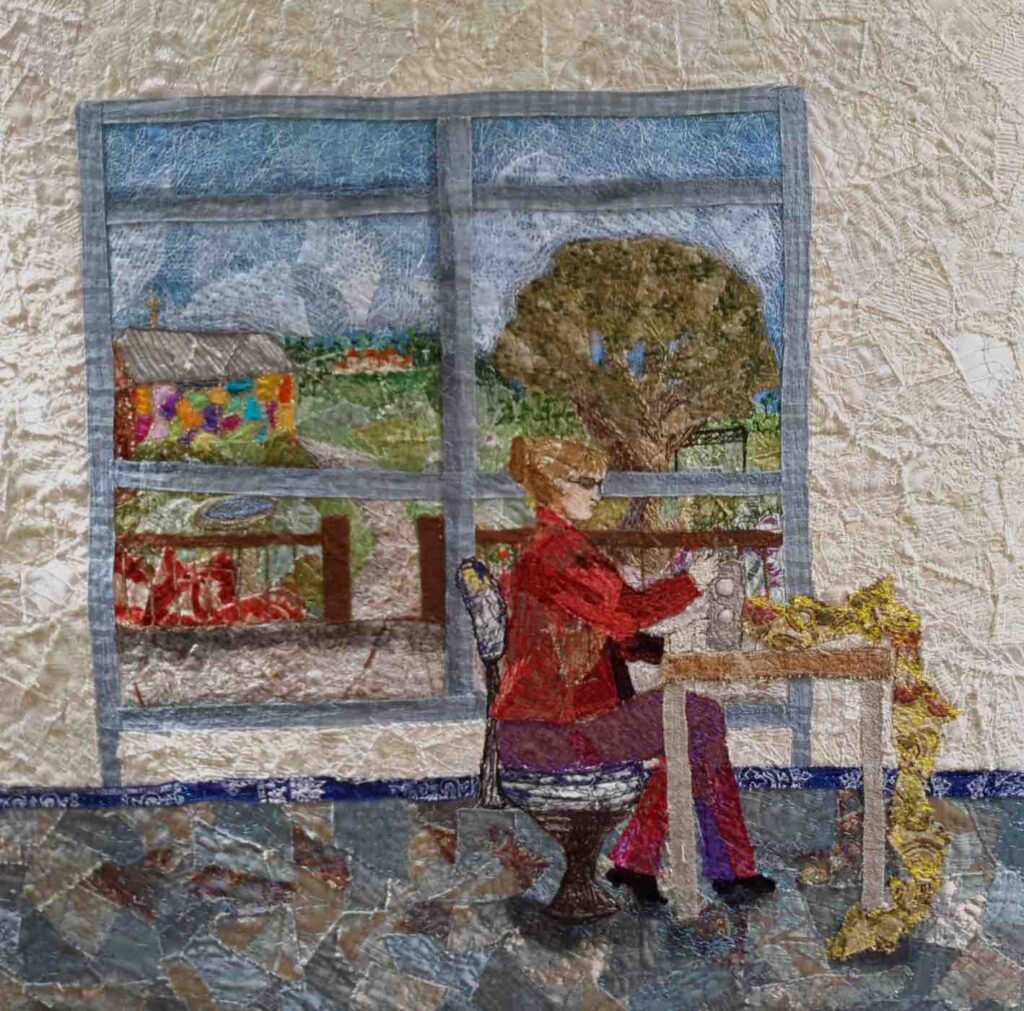
This is the artist in her studio #3 at Caritas Christi Hospice where she was one of the artist selected for the Artist in Residency Program in March 2014 to March 2015.
‘My studio looked out over the beautiful gardens and distance views of the Yarra Rangers National Park.
I was very fortunate to see life pass gracefully from my window while patients family and friends visited in the gardens’

In the 1920s auxiliary groups started up in many suburbs to raise money for the hospital.A SouthYarraAuxiliary was formed in November 1927 and the group’s secretary Mrs W. Burston proposed the idea of opening a hospital kiosk
The shop was built close to the front entrance of the hospital and opened for business on 23 June 1928.The ‘Little Green Shop’ was inspired by the original décor of the shop. Items for sale included fruit, soft drinks, eggs, biscuits, cigarettes, sweets, home-made jam and pickles, ‘sewing and writing necessaries’, soaps and powders.
The kiosk raised funds for the maintenance of St Vincent’s and hospital beds to furnish the new Caritas Christi Hospice.

Nurses Uniforms
Nurses uniforms for St Vincent’s Hospital dating from 1895 to present day.
By 1890s the majority probationer nurses paid £10 to begin training, they had to pay for their uniforms and received no payment in their first year, and later a few shillings were paid weekly.
They did, however, have attractive uniforms. Over their ankle-length, blue-striped dresses they wore long white aprons and white cuffs and belts, stiff, upright white collars and caps set squarely and high on their hair.
This is a video created by St Vincent’s media
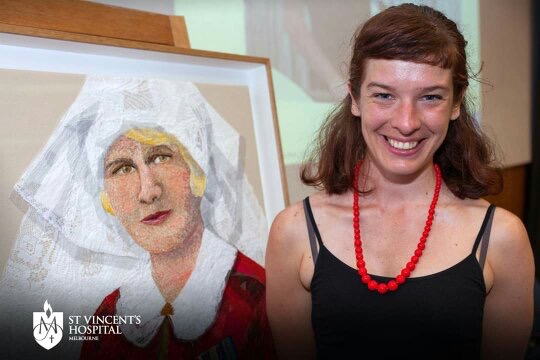
Graduate nurses ceremony, students photographed with Ida O’Dwyer
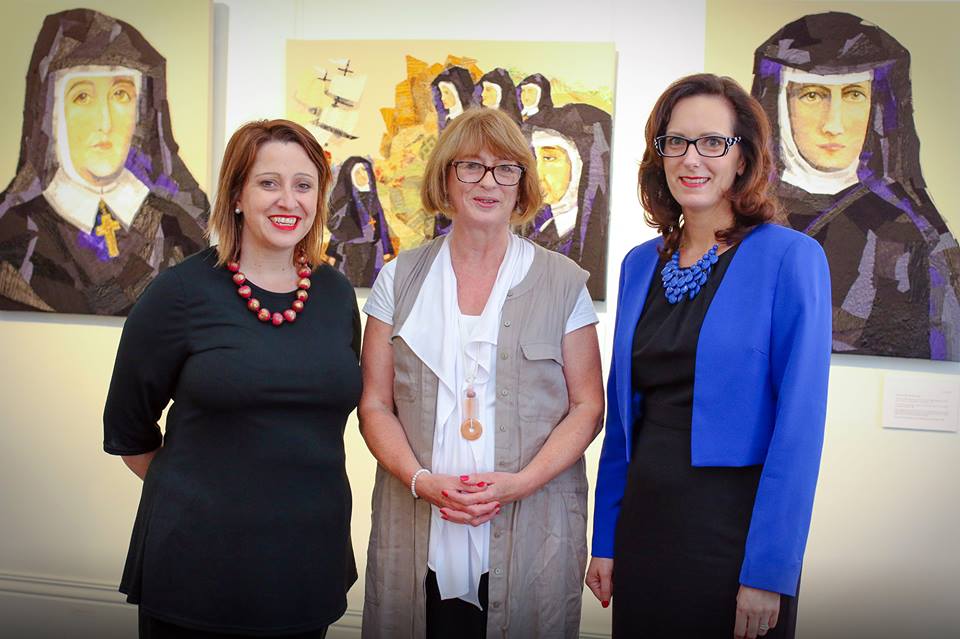
2016 opening night.
St Vincent’s CEO, Angela Nolan
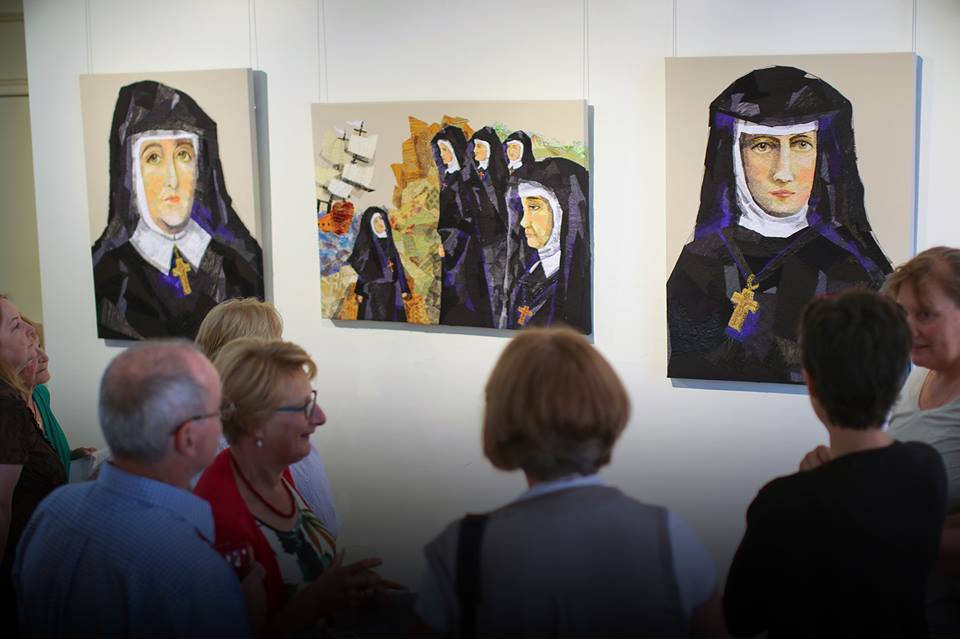
2016
Opening Night of ‘The Story of St Vincent’s’
International Women's Day 2016

